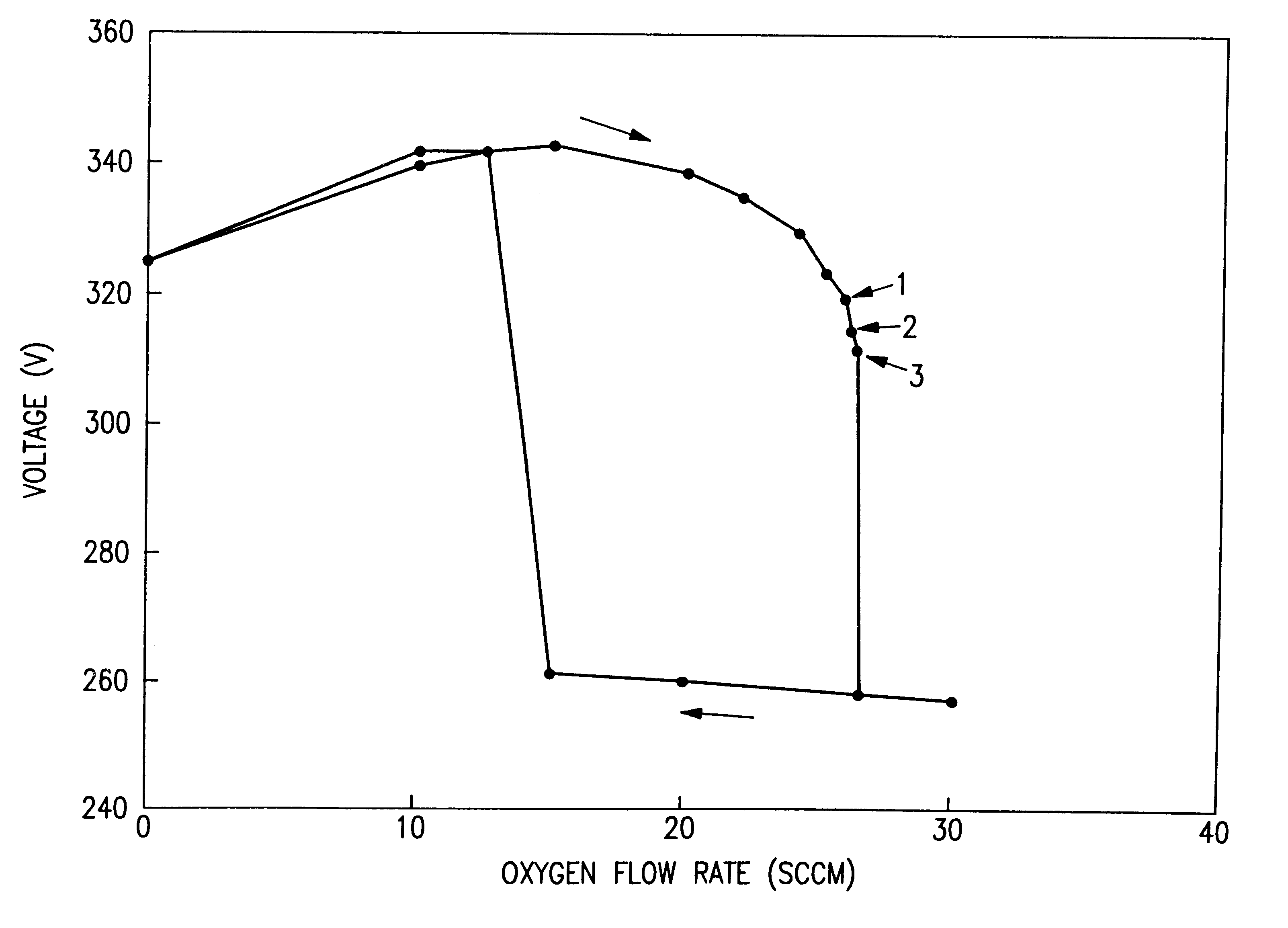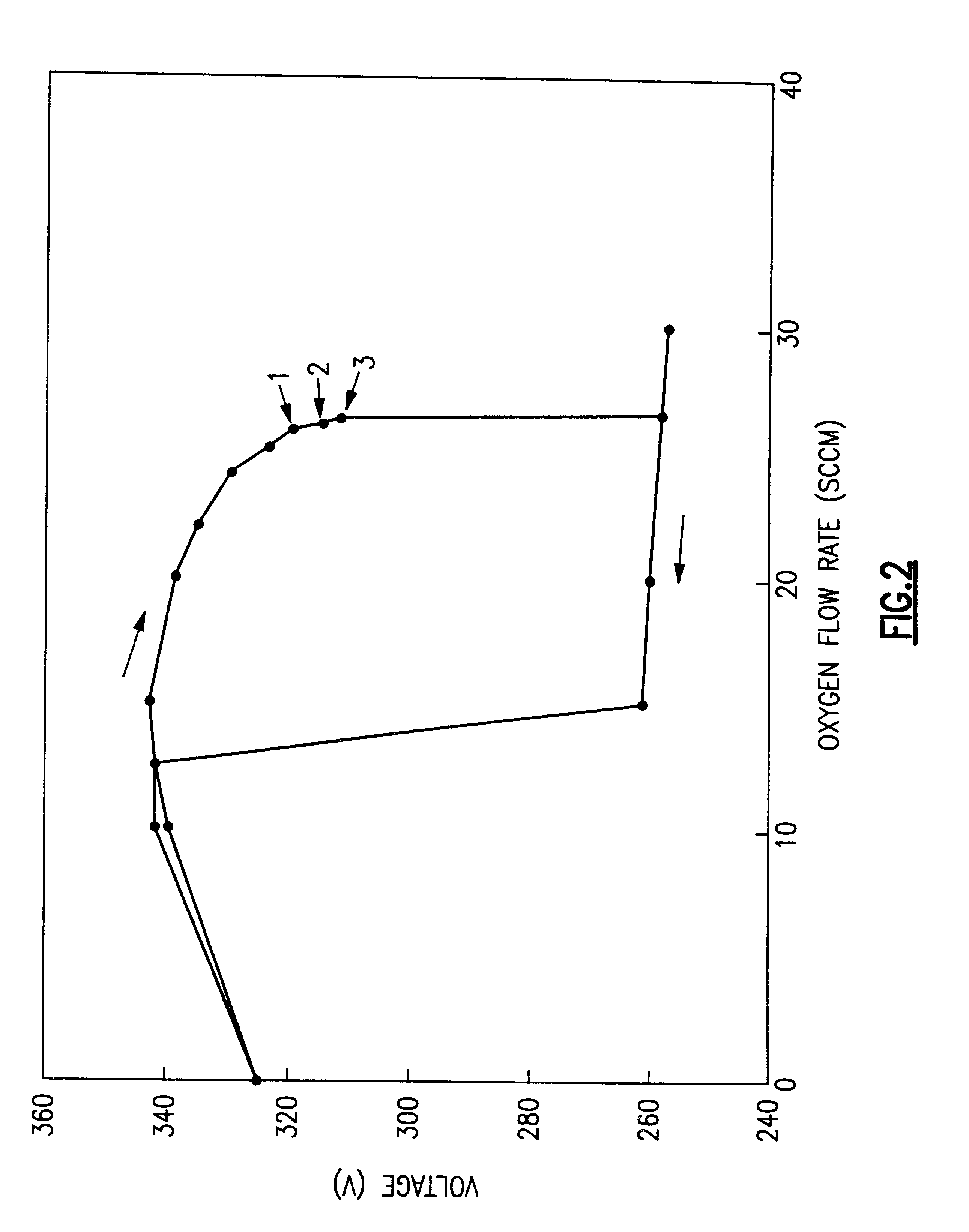Stable high rate reactive sputtering
a sputtering and high-rate technology, applied in the field of sputtering, can solve the problems of low deposition rate, preventing high-throughput production, excessive substrate heating,
- Summary
- Abstract
- Description
- Claims
- Application Information
AI Technical Summary
Problems solved by technology
Method used
Image
Examples
Embodiment Construction
The hysteresis curve shown in FIG. 2 was measured for a nominal DC power of 5 KW, and a total volumetric gas flow rate (i.e., argon and oxygen) of 200 sccm, using a Veeco Instruments Cymetra.TM. sputtering system. This system included separate gas rings for O2 and argon to minimize the poisoning of target surface by oxygen. In addition, a choke-off plate was placed between the target and substrate to reduce the arrival rate of metallic atoms sputtered off the target and reaching the substrate. Moreover, a rotating magnetron magnet pack, such as the RMX.TM. type cathode, was used to ensure full-face erosion on the target surface and hence to minimize target poisoning due to oxygen in areas of low or zero sputtering. Further an ENI RPG-100 power supply (which is a DC power supply with high frequency current polarity reversal capability) capable of pulsing at frequencies up to 200 kHz was used in conjunction with an Advanced Energy SPARC-LE-20 arc suppression unit to minimize arcing du...
PUM
| Property | Measurement | Unit |
|---|---|---|
| diameter | aaaaa | aaaaa |
| frequencies | aaaaa | aaaaa |
| thickness | aaaaa | aaaaa |
Abstract
Description
Claims
Application Information
 Login to View More
Login to View More - R&D
- Intellectual Property
- Life Sciences
- Materials
- Tech Scout
- Unparalleled Data Quality
- Higher Quality Content
- 60% Fewer Hallucinations
Browse by: Latest US Patents, China's latest patents, Technical Efficacy Thesaurus, Application Domain, Technology Topic, Popular Technical Reports.
© 2025 PatSnap. All rights reserved.Legal|Privacy policy|Modern Slavery Act Transparency Statement|Sitemap|About US| Contact US: help@patsnap.com



